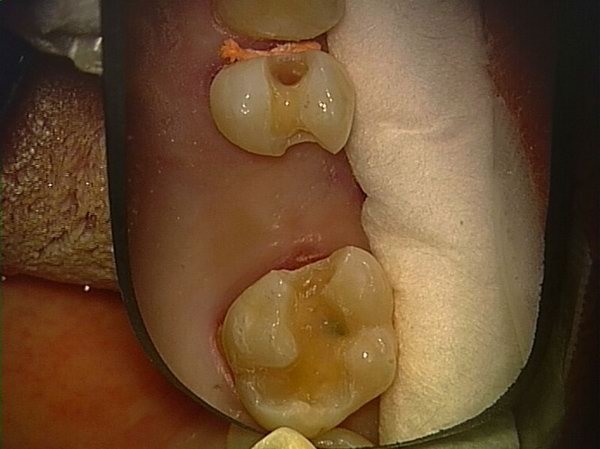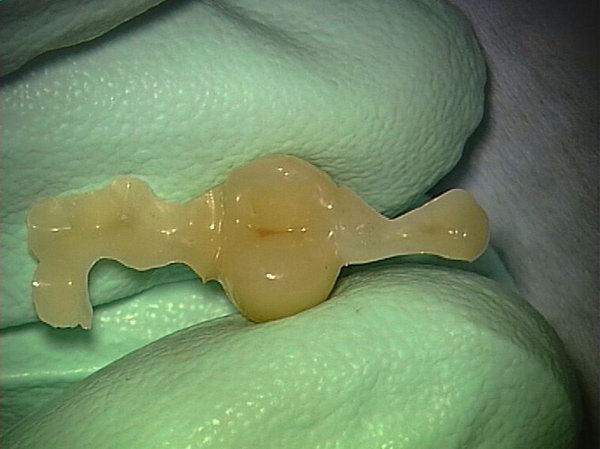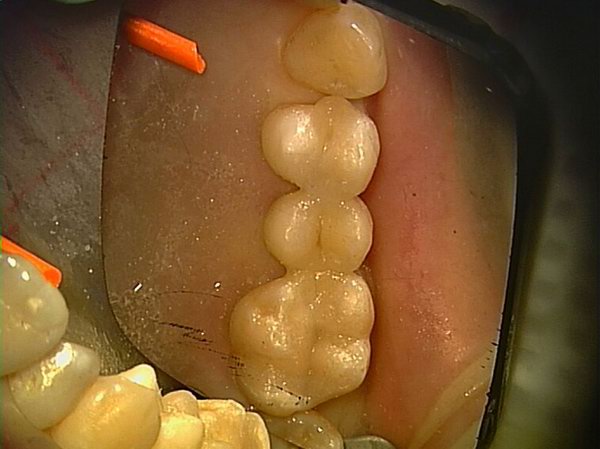Plastic inlay-crown-bridge-fibreglass strengthened
Plastic or ceramic?
Both plastic as well as ceramic are tooth coloured, but the fibreglass strengthened plastic inlays-crowns-bridges don’t break as easily as the ceramic work. Furthermore, ceramic needs a minimum thickness of 1.5 –2mm overall, and therefore often healthy tooth substance must be sacrificed, so that the thickness for a ceramic piece can be reached. This is seldom necessary with plastic! These days the plastics are also suitable for the chewing pressure in the lateral teeth.
Es gibt sowohl bei Kunststoffen als auch bei Keramiken enorme Entwicklungen. So war es zum Beispiel vor kurzem nicht denkbar, reine Keramikbrücken zu machen. Diese sind mittlerweile wegen industriell gefertigter und anschließend gefräster Keramik auch schon möglich geworden.
Individual patient planning
Therefore, which material is most suitable is something that is individually discussed with every patient.
This patient decided on having a fibreglass-strengthed plastic bridge, because both anchoring teeth only had “small” insufficient fillings (photo 1 and 2) for the bridge

Photo 1

Photo 2

Photo 3 Insufficient fillings removed

Photo 4 The plastic bridge made by the technician

Photo 5 Integrated plastic bridge in the mouth
There was theoretically also the possibility of grinding all around the teeth and sacrificing a lot of healthy tooth substance, but that is no alternative for me.
What is plastic or ceramic work inserted with?
With plastic cement. As the plastic or ceramic work, like inlays, crowns or bridges don’t have such a precise edge fissure, we use plastic cement, that fills the fissure for many years. Plastic joins the technical work to the tooth like a superglue, so that we have a wider range of use and can make inlays or crowns out of plastic that wouldn’t be possible with gold. The disadvantage of plastic cement is that it is an organic material, so that in comparison to zinc phosphate cement it doesn’t kill the bacteria off and that the area being worked on must be kept completely dryduring the cementation process - which is incidentally also true for normal plastic fillings!